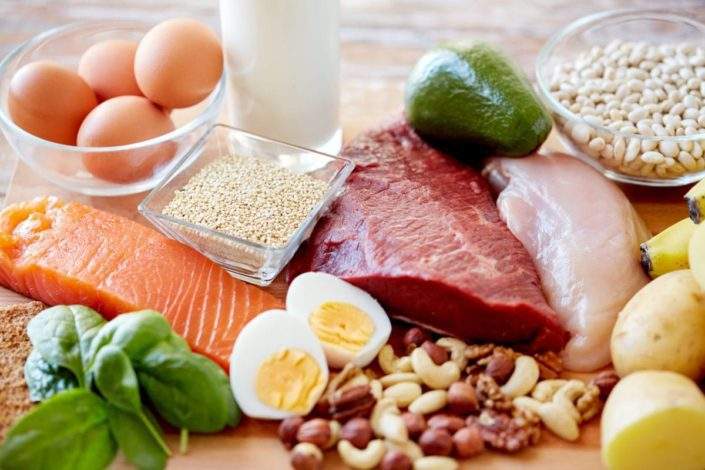Decoding Nutrition Labels: What Every Dad Should Know

Hey there, fellow dads! Today, we’re going to dive into a topic that’s often overlooked but crucial for our health and well-being: nutrition labels.
If you’re a man between the ages of 25 and 45, chances are you’re balancing a busy life, including work, family, and everything in between.
But understanding what’s on those nutrition labels can make a significant difference in your overall health.
So, grab a seat, and let’s have a chat about how to decode those labels and make informed choices for a healthier you.
Why Should Dads Care About Nutrition Labels?
Before we delve into the nitty-gritty of nutrition labels, let’s talk about why they matter.
As busy dads, we often put our health on the backburner, prioritizing work and family responsibilities.
But here’s the thing – by paying a little attention to what we’re eating, we can increase our energy levels, improve our mood, and set a fantastic example for our kids.
Moreover, understanding nutrition labels can help us avoid hidden health traps.
There’s a good chance you’ve encountered labels that claim to be “healthy” or “low-fat,” but are they really?
Knowing how to read labels can help you see beyond marketing gimmicks and make choices that truly benefit your health.
Breaking Down the Nutrition Label
Now, let’s get into the meat of it – decoding nutrition labels.
You’ve seen them on virtually every packaged food item, but do you know what all those numbers and percentages mean?
Let’s break it down step by step.
1. Serving Size: Where It All Begins
The serving size is your starting point. It tells you how much of the product the nutrition facts are based on.
This is essential because all the information on the label, including calories and nutrients, is often given per serving.
Make sure to compare the serving size to the amount you actually eat.
If you consume more or less than the suggested serving, adjust the values accordingly.
2. Calories: The Energy Currency
Calories are a measure of the energy provided by a serving of food.
For dads on the go, it’s essential to understand how many calories you’re consuming.
But remember, not all calories are created equal.
You want to focus on nutrient-dense foods that give your body more than just empty calories.
3. Nutrients to Limit: Watch Out for the Bad Guys
Next on the label, you’ll find a list of nutrients to limit, commonly referred to as “the bad guys.”
These include:
Total Fat: Keep an eye on saturated and trans fats, as they can raise your bad cholesterol levels and increase the risk of heart disease.
Cholesterol: High cholesterol levels can lead to heart problems, so aim for products with lower cholesterol content.
Sodium: Too much sodium can lead to high blood pressure. Opt for products with lower sodium levels.
4. Nutrients to Embrace: The Good Stuff
On the flip side, you’ll find nutrients that are beneficial for your health:
Dietary Fiber: Fiber is your friend, helping with digestion and keeping you feeling full. Aim for products with higher fiber content.
Vitamins and Minerals: Look for products that provide essential vitamins and minerals like calcium, vitamin D, and iron. These are crucial for overall health.
5. % Daily Value (%DV): Putting It into Perspective
The %DV on the label tells you how much a nutrient in a serving of food contributes to your daily diet.
A general rule of thumb is that 5% or less is considered low, while 20% or more is high.
Use this as a guide to determine whether a food is a good source of a particular nutrient.
Tips for Smart Label Reading
Now that we’ve broken down the label’s components, here are some tips to help you make healthier choices:
1. Compare Products
When shopping, compare similar products to choose the one with better nutritional value. Look for lower calories, saturated fat, and sodium, and higher fiber and essential nutrients.
2. Mind the Added Sugars
The new nutrition labels also include a line for added sugars. Be wary of products with high added sugar content, as excessive sugar intake can lead to health issues like diabetes and obesity.
3. Ingredients Matter
Check the ingredient list for hidden additives and preservatives. The shorter and more recognizable the ingredient list, the better.
4. Be Wary of Marketing Claims
Don’t be swayed by flashy marketing claims like “all-natural” or “organic.”
Always verify the information on the nutrition label.
5. Consider Your Dietary Needs
Take into account any dietary restrictions or preferences you have, such as vegetarian, gluten-free, or low-carb diets. Nutrition labels can help you find products that fit your lifestyle.
Wrapping Things Up
Decoding nutrition labels may seem like a small step, but it can have a significant impact on your overall health and well-being.
As dads, we have a responsibility to take care of ourselves so we can continue being the best for our families.
So, the next time you’re at the grocery store, take a moment to read those labels.
It’s a simple yet powerful way to make informed choices that will keep you healthy and energized for all of life’s adventures.
Happy label reading, dads!
Until our next chat…
Stay healthy, my friend!
Isai






